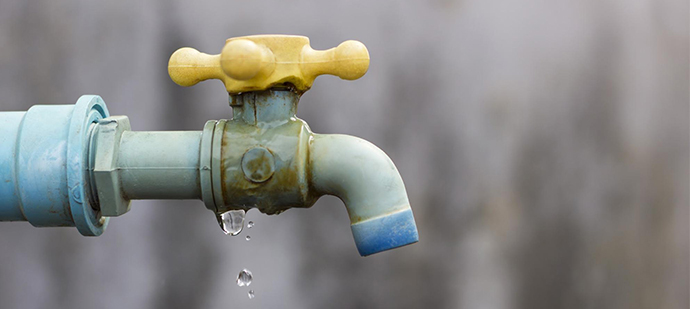Guide To Water Leakage Detection At Home
Guide To Water Leakage Detection At Home
Blog Article
We have discovered the article pertaining to Finding hidden leaks listed below on the web and reckoned it made good sense to discuss it with you on this site.

Early discovery of leaking water lines can mitigate a possible catastrophe. Some little water leaks may not be visible.
1. Examine the Water Meter
Every residence has a water meter. Examining it is a surefire manner in which aids you uncover leaks. For beginners, turn off all the water sources. Make certain no one will certainly purge, utilize the tap, shower, run the cleaning equipment or dishwashing machine. From there, go to the meter and watch if it will transform. Given that no person is utilizing it, there should be no movements. If it moves, that suggests a fast-moving leakage. Similarly, if you spot no changes, wait an hour or two and also examine back once again. This indicates you may have a slow-moving leak that can even be underground.
2. Inspect Water Usage
Examine your water expenses and also track your water usage. As the one paying it, you should observe if there are any type of disparities. If you identify sudden changes, despite your consumption coinciding, it means that you have leaks in your plumbing system. Keep in mind, your water expense need to drop under the same range every month. An unexpected spike in your expense suggests a fast-moving leakage.
On the other hand, a consistent rise monthly, despite having the same practices, reveals you have a slow-moving leak that's additionally slowly rising. Call a plumber to thoroughly check your residential or commercial property, especially if you really feel a cozy area on your floor with piping beneath.
3. Do a Food Coloring Examination
30% comes from toilets when it comes to water consumption. Examination to see if they are running correctly. Decrease specks of food color in the tank and wait 10 minutes. There's a leakage between the tank as well as bowl if the shade in some way infiltrates your bowl during that time without flushing.
4. Asses Exterior Lines
Don't fail to remember to inspect your outside water lines as well. Test faucets by affixing a garden hose pipe. Must water seep out of the link, you have a loose rubber gasket. Change this and make certain all links are tight. If you've got a sprinkler system, it will certainly help get it professionally took a look at and also maintained each year. One little leakage can waste lots of water and increase your water costs.
5. Evaluate the situation as well as evaluate
House owners ought to make it a behavior to inspect under the sink counters as well as even inside cabinets for any bad odor or mold and mildew growth. These two red flags indicate a leakage so timely attention is needed. Doing routine evaluations, even bi-annually, can save you from a major problem.
A lot more importantly, if you know your residence is already old, keep a watchful eye on your heaters, pipes, pipes and so on. Check for stainings and compromising as most pipelines as well as home appliances have a life expectancy. They will likewise normally degrade as a result of deterioration. Don't wait for it to rise if you suspect leaking water lines in your plumbing system. Call an expert plumber right now so you do not end up with a dreadful mess in your house.
Early discovery of dripping water lines can minimize a potential calamity. Some small water leaks may not be noticeable. Examining it is a proven way that helps you uncover leaks. One small leak can throw away heaps of water and surge your water bill.
If you suspect dripping water lines in your plumbing system, don't wait for it to rise.
WARNING SIGNS OF WATER LEAKAGE BEHIND THE WALL
PERSISTENT MUSTY ODORS
As water slowly drips from a leaky pipe inside the wall, flooring and sheetrock stay damp and develop an odor similar to wet cardboard. It generates a musty smell that can help you find hidden leaks.
MOLD IN UNUSUAL AREAS
Mold usually grows in wet areas like kitchens, baths and laundry rooms. If you spot the stuff on walls or baseboards in other rooms of the house, it’s a good indicator of undetected water leaks.
STAINS THAT GROW
When mold thrives around a leaky pipe, it sometimes takes hold on the inside surface of the affected wall. A growing stain on otherwise clean sheetrock is often your sign of a hidden plumbing problem.
PEELING OR BUBBLING WALLPAPER / PAINT
This clue is easy to miss in rooms that don’t get much use. When you see wallpaper separating along seams or paint bubbling or flaking off the wall, blame sheetrock that stays wet because of an undetected leak.
BUCKLED CEILINGS AND STAINED FLOORS
If ceilings or floors in bathrooms, kitchens or laundry areas develop structural problems, don’t rule out constant damp inside the walls. Wet sheetrock can affect adjacent framing, flooring and ceilings.
https://www.servicemasterbyzaba.com/blog/how-to-detect-water-leakage-in-walls/

I'm certainly very occupied with Detecting hidden plumbing leaks and I hope you liked the entry. Remember to take the time to share this blog entry if you enjoyed reading it. Thanks for your time invested reading it.
Report this page